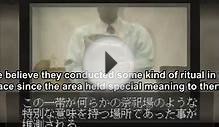
 Back translation and reconciliation services give you additional quality and accuracy assurance for your most sensitive translation and localization projects. Both back translation and reconciliation become important when you have high value content that you need translated across languages with as much certainty as possible that the exact meaning is conveyed.
Back translation and reconciliation services give you additional quality and accuracy assurance for your most sensitive translation and localization projects. Both back translation and reconciliation become important when you have high value content that you need translated across languages with as much certainty as possible that the exact meaning is conveyed.
Back translations and reconciliations can be performed for all types of translation and localization projects.
Keep reading for an overview of both back translation and reconciliation and an exploration into why these can be important.
What is Back Translation?
A back translation allows you to compare translations with the original text for quality and accuracy. Back translations help to evaluate equivalence of meaning between the source and target texts.
Back translation involves taking the translated version of a document or file and then having a separate independent translator (who has no knowledge of or contact with the original text) translate it back into the original language.
Due to the nature of language, a back translation will never be 100% exactly the same as the original source text, but it does help to identify any confusion, ambiguities or errors that may arise from the nuances of language.
Back Translations are often performed as literally as possible to give an accurate depiction of the exact meaning of the translation in the target language. Because of this, some back translations may feel artificial or unnaturally written. However, if there are major semantic differences between the source and back translation, it is not clear whether the fault is with the forward translation or with back translation. At this point, you may opt for reconciliation.
What is Reconciliation?
During reconciliation the original source material is compared with the back translation to look for issues where the meaning is confusing or slightly off in meaning. Under reconciliation, edits and adjustments are made as needed to optimize the final translation.
After performing a back translation, a report is generated that outlines all items that could be potential issues. This “Reconciliation Report” makes note of any/all differences or potential discrepancies where the meaning is confusing or slightly off in meaning.
While some nuances in language may be acceptable, during reconciliation any discrepancies or differences of meaning are identified and corrected. When discrepancies are found, they are traced back to find out exactly how/where they occurred and what steps (if any) should be taken to rectify them. Project Managers may consult with and question the original translators to make adjustments to the translation.
The Project Manager repeats this process for all discrepancies found within the Reconciliation Report until the source material and the back translation match for equivalence of meaning. The result is a reconciled translation that is optimized for accuracy and equivalence of meaning.
A final Reconciliation Report is usually submitted to the client with the optimized reconciled translation. This report explains discrepancies (such as mistranslations, cultural differences, etc.) that were discovered in the forward translation by performing the back translation and how these were addressed.
See also:- Temukan panduan dari myraclekitchen.com dan nikmati kemudahannya.
MORE TRANSLATION VIDEO












